This ultimate guide on sugarcane farming will help you in knowing from beginning to harvesting of sugarcane crop. Also get to know the importance of sugarcane farming by reading this article. Sugarcane is responsible for production of 60% of the total white crystal sugar production in the world.
Rest 40% world’s white crystal sugar comes from sugarbeet. Sugarcane is also a potential energy crop. Sugarcane is also an important industrial crop. That’s why the demand of sugarcane is increasing globally.
Table of Contents
Introduction
Sugarcane is species of tall perennial grass in the genus Saccharum. Plant can grow up to 3 to 6 feet in height. According to wikipedia, sugarcane is the world’s largest crop by production. The total production of sugarcane was found to be 1.8 billion tones in the year 2017.
Farmers grow sugarcane for sucrose production, as well as for many other value added by-products. They can be feed, alcohol, paper, bagasse, and electricity. Bagasse is part of sugarcane left after the juice is extracted in rollers.
Sugarcane farming is considered as one most of the most important activities in the world. According to researchgate.com, it is due to social, environmental, and economic implication of sugarcane. If you are a farmer and you follow best practices for farming of sugarcane. Then it can ensure a good amount of profit.
From one acre of land used for sugarcane farming, you can earn up to 3 lakhs Indian Rupees.
Botanical Classification
Botanical Name: Saccharum officinarum
Family: Poaceae
Order: Poales or Cyperales
Class: Liliopsida
Division: Magnoliophyta
Chromosome Number: 80 ( 2n=80)
Source: usda.gov.in
Origin Of Sugarcane
The main centre of origin of Saccharum officinarum is New Guinea. However, the present day commercial sugarcane varieties are man-made hybrid clones. These hybrid clones are related to S.officinarum, S.spontaneum, S.barberi, S.sinense, and S.robustum.
We call officinarums as “noble canes” due to the thick juicy, low fibred canes of high sucrose content. S.robustum is the closest wild relative of S.officinarum.
Area & Production
In the year 2018 the global production of sugarcane in the world was 1.91 billion tones. Total 26 million hectares of land was used for sugarcane farming in 2018. Brazil is the leading producer of sugarcane. It produces around 39% of the world total sugarcane production.
This is followed by India ( 20% of the world’s total), China ( 6% of the world’s total), and Thailand ( 6% of the world’s total). However, globally 115 countries cultivate sugarcane. Other sugarcane producing countries are Pakistan, Mexico, Columbia, Australia, Guatemala, etc.
Sugarcane Farming Guide
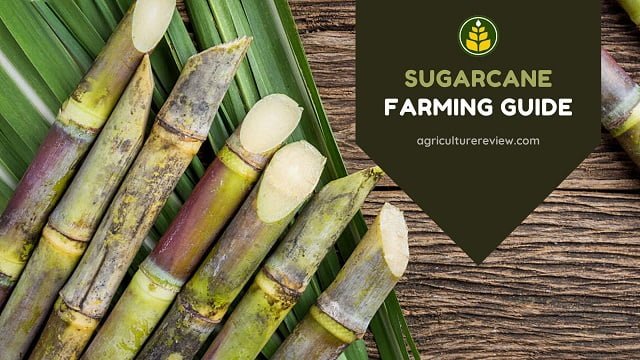
For successful cultivation of sugarcane, you need to know best scientific process to cultivate sugarcane crop. I am Agriculture Review, and in this article I am going to explain expertise scientific cultivation process of crop. This guide will help you to get higher crop yield from your field.
Soil Requirement
You can cultivate sugarcane in various type of soils ranging from sandy to heavy clayey soils. But, the climate, drainage, watering, fertility, and depth should be favourable. However, moderately heavy and medium deep loamy soil are better for cultivation of sugarcane.
Sugarcane crop can tolerate pH of the soil ranging from 4 to 9. Adequately soil profile to a depth of at least 40 to 60 centimetres without compaction, hard pan, and lime band in subsoil is ideal. It is considered better to get your soil tested.
Getting your soil tested allows to determine the best suitable crop and practices to get good returns.
Climate & Temperature
Sugarcane is a tropical plant. It can grow well in hot sunny areas with adequate rainfall. Moreover temperature, light, and moisture are the principal climatic factors that determines yield. Globally you can start sugarcane farming from 37 degrees N in Southern Spain to 31 degrees S in South Africa.
You can cultivate sugarcane up to 1600 metres altitude close to the equator.
However sugarcane crop can not tolerate temperature below 12 degrees Celsius. Below this temperature the growth ceases in sugarcane plant. Mean daytime temperatures of 30 to 35 degrees Celsius for at least 4 to 5 months is ideal to stimulate growth. Moreover, 1 to 2 months of cooler temperatures prior to harvest enhances sucrose accumulation.
Ideal Temperature for growth and development of Sugarcane Crop
| Processes | Temperature |
|---|---|
| Carbon Assimilation | 30 degrees Celsius |
| Sugar Synthesis | 30 degrees Celsius |
| Sugar Transport | 30-35 degrees Celsius |
| Tillering | 33.3-34.4 degrees Celsius |
| Root Growth | 36 degrees Celsius (Soil) |
| Shoot Growth | 36 degrees Celsius (Soil) |
High humidity (80-85%) favours rapid cane elongation during grand growth period.
Field Preparation
Field preparation mainly depends on type and condition of the soil. In clay or clayey loam soil, one or two deep ploughings and one cross ploughing with a mould board plough is necessary. This is followed by crushing of clod with a disc harrow. For crushing of clods, you can also select junior cultivar, or a beam clod crusher.
But for loamy soils, start preparation of field after winter rain showers. Give the field a preparatory irrigation and plough with indigenous plough to a fine tilth. Field preparation helps to remove weeds and providing favourable condition for the growth of crop.
During field preparation, you should add bulky organic manures to increase fertility of the soil. You can also add jeevamrut, or waste decomposer, or sanjeevak. They are bio fertilizers and pesticides. They will help to control pest and will decompose organic matter in the soil.
You can plant sugarcane either in furrows or in trenches. You can make furrows or trenches half to one and half metres apart. To obtain high yield avoid narrow spacing. Narrow spacing results in poor crop yield.
You can make furrows with the help of heavy double mould board ridger. However, you can dig trenches with hand labour. You can use pick axes and spade to dig trenches up to 25 centimetres deep.
Season
Duration of sugarcane crop ranges from 10 to 18 months. We call 18 to 20 month crop as “adsali.” However, a 12 month crop is very common and is known as “eksali.” The plantation of sugarcane is generally practiced during warmer season. And harvesting is carried out during cool and dry season.
In tropical climate you can start planting main season crop during spring to early summer season. This means you can practice plantation during February to March. But, for adsali crop, you can start plantation from July to August.
Seed Material
For producing new seedlings, breeders use true seed. But to propagate these seedlings you have to try stem cuttings. Buds on immature part of canes germinate very well. In mature sugarcane plant, the tops are less mature.
These tops are also inferior in sugar content, that’s why top setts are taken from a mature crop for propagation. Apical dominance control germination of a bud through auxin hormones. This apical dominance can be removed by clipping of the top bud.
Hence, instead of planting the entire cane, cut it into three budded setts for planting. Do not take setts from bottom part of the plant as they germinate very late. Take setts from upper part of the crop aged 6 to 7 months.
Sett Treatment
If you are taking setts from stale and dried canes then soak them in water. To prevent your setts from any infection or pests, you can follow this recommended table.
| Problem | Treatment |
|---|---|
| Termites & Shoot Borers | Endosulfan @ 1 Kilograms per hectare |
| Sett Rotting | Agallol @ 0.5% |
| Grassy Shoot | Terramycine @ 250 ppm |
| Leaf Scald | Streptomycin @ 100 ppm |
| Leaf Spot | Carbendazim @ 0.1% |
| Seed Born Infection | Moist hot air treatment at 54 degrees Celsius for 2 hours |
However, using jeevamrut also helps to prevent your setts from any infection. It is also an organic substitute for farmers. I advice all the readers to use these chemicals under recommended level. Using excess can harm human health.
Seed Rate
You can plant 30,000 setts of 3 buds or 80,000 setts of 2 buds per hectare. However seed rate can differ according to your region and climate.
Planting Methods
There are various methods of plantation of sugarcane. But, three methods flat, trench and pit system are most famous. Let’s know about these planting methods. You can adopt any one of these according to the prevailing farm conditions.
Flat Planting
If the soil of your field is moderate to low fertile with scarce irrigation then you can try this planting method. You can practice planting in furrows opened by traditional plough, or improved ridger at intervals of 60 to 90 centimetres.
Place the setts end to end and cover it with 3 to 6 centimetres layer of soil.
Trench Planting
If the soil of your field is highly fertile with adequate irrigation then you can practice this method. With the help of ridger make furrows 20 to 25 centimetres deep and 30 to 40 centimetres wide at an interval of 90 centimetres.
Plant the setts with last bud overlapping at the bottom in the centre of furrows.
Pit Planting
You can practice this method in sloppy land. Dig pits at an interspacing of 20 to 30 centimetres in rows along the contour with row to row distance of 75 centimetres. You can apply organic manure at the bottom of the pits.
Plant the setts in a triangle in pits and cover them with soil.
Skip Furrow Planting
To save irrigation water and facilitating propping of canes you can adopt this method. This method is hybrid of flat and trench system. Dig trenches 45 centimetres apart. Leave a gap of 90 centimetres after each two rows of cane planted at 45 centimetres.
Manures & Fertilizers
Sugarcane is a heavy feeder crop. It requires high amounts of nitrogen rich fertilizers for higher yield. During preparation of field you should apply 25 to 50 tons of bulky organic manure. However fertilizer dozes can be different depending on many factors.
The best practice is to get your soil tested for ideal fertilizer doze recommendation. A 12 to 18 months crop of sugarcane requires 112 to 504 Kilograms of Nitrogen per hectare. If you have not tested your soil yet then you can follow this fertilizer doze.
| Fertilizer | Recommended Doze |
|---|---|
| Nitrogen | 300 Kilograms per hectare |
| Phosphorus | 100 Kilograms per hectare |
| Potassium | 200 Kilograms per hectare |
| Zinc Sulphate | 37.5 Kilograms per hectare |
| Ferrous Sulphate | 100 Kilograms per hectare |
If your soil is deficient in sulphur, then you can apply gypsum @ 500 Kilograms per hectare. Apply 10% of the total nitrogen during planting. 40% of the total nitrogen 6 to 8 weeks after planting. Again apply 10% of the total nitrogen after 8 to 12 weeks. Then at last apply rest 40% of the total nitrogen 20 to 24 weeks after plantation.
You have to apply 50% of the phosphorus and potassium during plantation. Apply rest 50%, 20 to 24 weeks after plantation. This fertilizer doze will help you to get increased crop yield from your field.
Irrigation
Irrigation at sensitive crop growth stages is very necessary. Moreover you can adopt sprinkler or drip irrigation system for best result. However furrow irrigation is the the most common method used for irrigating sugarcane field.
Sugarcane crop requires 2000 to 2500 mm of water depending on various factors such as climate, and soil. Maintain adequate moisture during germination phase, tillering phase, grand growth phase, and maturity phase. Below is the irrigation frequency table for sugarcane crop.
| Critical Stages | Clayey Soil | Sandy Soil |
|---|---|---|
| Germination phase (0-35 days) | Once after every 10 days | Once after every 7 days |
| Tillering phase (36-100 days) | Once after every 10 days | Once after every 8 days |
| Grand growth phase (101-270 days) | Once after every 10 days | Once after every 8 days |
| Maturity phase (271-harvest) | Once after every 14 days | Once after every 10 days |
Although maintain proper drainage in the field to avoid water logging condition. Following drip irrigation system can help to prevent 40 to 45% of total water application.
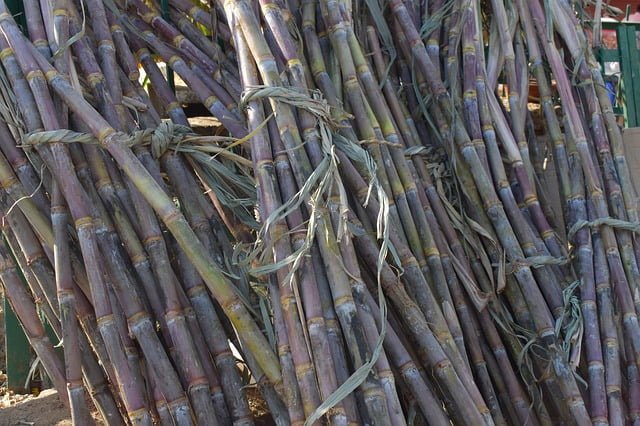
Harvesting
When you notice lower leaves withering up and few green leaves on the top then your crop is ready for harvesting. You can also cut across the cane with a sharp knife and hold it against the sunlight. The mature cane gives slight sparkling appearance in its flesh.
However, the best practice is to keep and use hand sugar refractometer. If the reading is 20 then you can start harvesting your crop. You can start harvesting with the help of cane cutting knife. Give a slanting cut from the ground level.
Strip off the dry leaves and roots from the sugarcanes. Cut the immature top portion along with 2 to 3 internodes. You can use them for planting. Tie the harvested canes in small bundles with the help of ropes.
For the production of sucrose you should crush sugarcanes within 24 hours. Any further delay will result in conversion of sucrose into glucose.
Yield
Yield of the crop can vary depending on the variety, time of planting, climatic conditions, and fertility of the soil. 12 to 18 months old adsali crop can yield up to 170 tonnes per hectare. While 12 months old eksali crop can yield up to 100 tonnes per hectare. Pre seasonal sugarcane planting can result in getting yield of 120 tonnes per hectare.
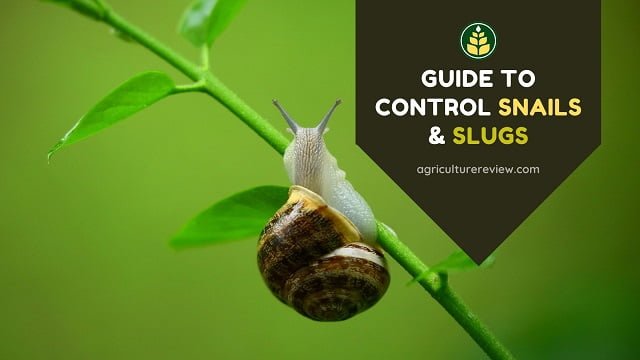

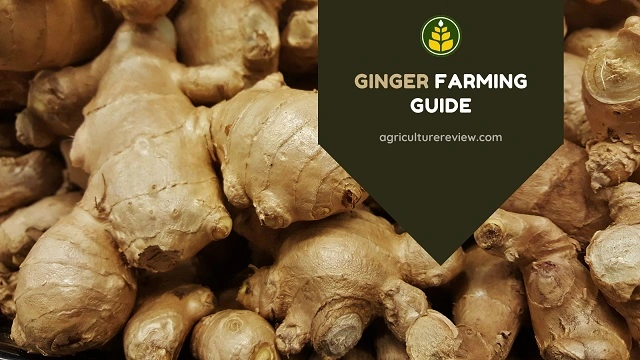
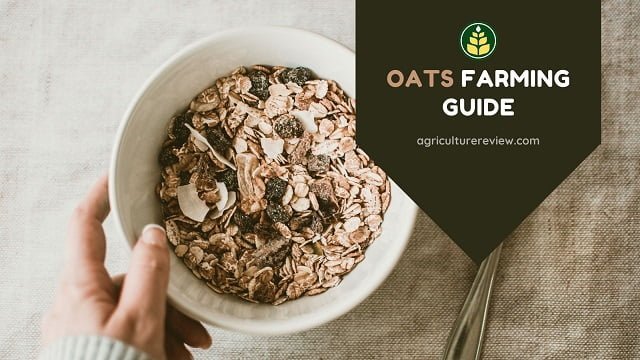


Fantastic guide
Just starting the sugarcane farming. For chewing
This is soo encouraging 👏